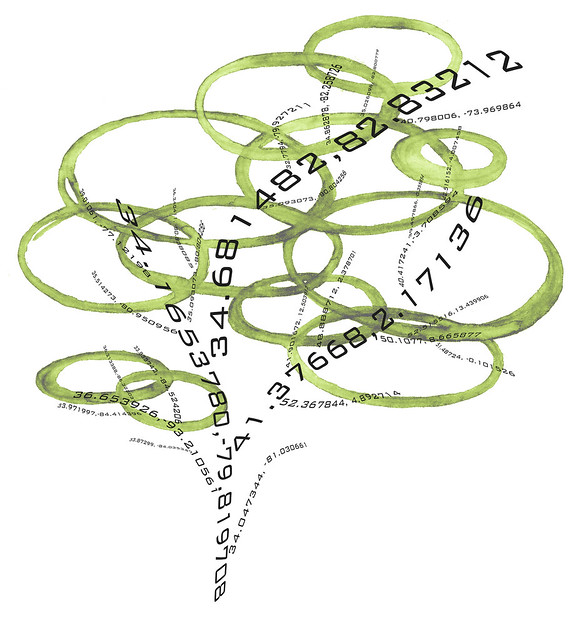
Photo credit Lauren Manning
And here are this week’s Green Numbers – numbered this week for extra meta-goodness (!):
-
i2O: An Intelligent Grid For Water Systems That Could Save Millions Of Gallons
i2O is a centralized water control method that directs the distribution and pressure of an entire water system. Sure, it sounds like Plumbing 2.0, but this is actually a good example of a disruptive technology.
i2O systems (that?s i two oh, not i twenty, if that wasn?t clear) have been installed in dozens of UK cities and save an average of nearly 50,000 liters a day each, as the system rerouted and adjusted pressure around leakages and inefficient pipes. There will still be bursts, and bad sealing, and we?ll still be losing a lot of water, but anything we can shave off the estimated 32 billion cubic meters of water lost from cities each year (World Bank estimate) is worth it.
-
Eurostar spending $1bn to operate newer, greener fleet by 2014
Eurostar has decided to invest over one billion dollars for the acquisition of ten new green trains and for the refurbishment of their entire existing stock in order to create a fleet that operates with lowered carbon emissions and with greener systems as a whole. Eurostar is also doing this as a means of providing a low carbon alternative to flights connecting the countries Eurostar rails already service.
-
Chicago Coal Plants Caused Up To $1 Billion in Health Damages Since 2002
Pollution from Chicago?s two coal plants has created up to $1 billion in health and related damages in the last 8 years, according to a report released today by the Environmental Law & Policy Center (ELPC).
The report uses data from the National Research Council that found that particulate matter, or soot, from the Fisk and Crawford coal plants in Chicago created $127 million in health and related damages in 2005.
Using that model, ELPC analyzed pollution emissions data and found that the two plants have created between $750 million and $1 billion in public health damages since 2002.
-
How To Offset Half of All Airline Carbon Emissions With Human Urine
if we capture our urine–like has been done in China (both recently and historically)–and use it as fertilizer instead of petro-chemicals we could be saving huge amounts of carbon emissions.
In fact, the video purports (I say ‘purports’ because it’s not specified how the following figure is derived, though I have no immediate reason to doubt it) that we’d essentially offset half of all the world’s airline carbon emissions, if urine collection for fertilizer was done widely. -
First fall in greenhouse gas emissions in Ireland in 20 years
Ireland’s greenhouse gas emissions fell by nearly 8% last year, the first time a fall has been reported in 20 years.
-
General Electric Invests $400 Million in Fridge of the Future?
General Electric today announced that it will invest over $400 million into four centers of excellence dedicated toward designing and manufacturing refrigeration products.
A year ago, GE plunked $600 million into facilities for developing energy efficient washers and water heaters. Both efforts will lead to 1,300 jobs in the U.S., according to the company.
-
Portugal makes a huge leap to Renewable Energy in 5 years!
Five years ago, the leaders of this sun-scorched, wind-swept nation made a bet: To reduce Portugal?s dependence on imported fossil fuels, they embarked on an array of ambitious renewable energy projects ? primarily harnessing the country?s wind and hydropower, but also its sunlight and ocean waves.
Today, Lisbon?s trendy bars, Porto?s factories and the Algarve?s glamorous resorts are powered substantially by clean energy. Nearly 45 percent of the electricity in Portugal?s grid will come from renewable sources this year, up from 17 percent just five years ago.
-
Newsweeks Green Rankings Global Top 100
NEWSWEEK ranked the biggest publicly traded companies in developed and emerging world markets.
This is a list of the top 100.
-
The Top Five GE Technologies That Turn Waste Into Energy
From GE’s Imagination Daily reports are details of GE’s top 5 technologies for turning waste into energy. Everything from re-using industrial wastewater through to burning spent nuclear waste for energy!
-
Five Reasons Why Carbon Management Software is the Next Big Thing
A new liability is coming onto the collective balance sheet of companies around the world: Carbon.In the context of increasing awareness of the business and societal risks of climate change, corporate carbon emissions (and the energy consumption that creates them) are becoming a crucial indicator of business performance. And a new type of software platform, enterprise carbon and energy management (ECEM), is emerging to enable companies to monitor, manage, and report corporate carbon emissions, as well as the energy consumption which is their principal source.
-
NOAA Arctic Report Card – update for 2010
Return to previous Arctic conditions is unlikely
Record temperatures across Canadian Arctic and Greenland, a reduced summer sea ice cover, record snow cover decreases and links to some Northern Hemisphere weather support this conclusion
Posted from Diigo. The rest of my favorite links are here.
